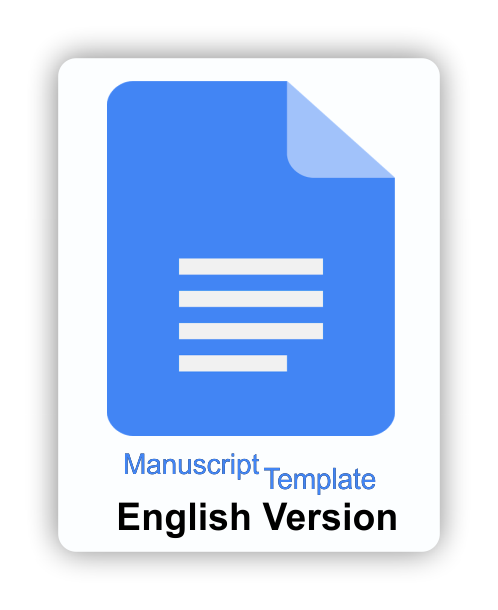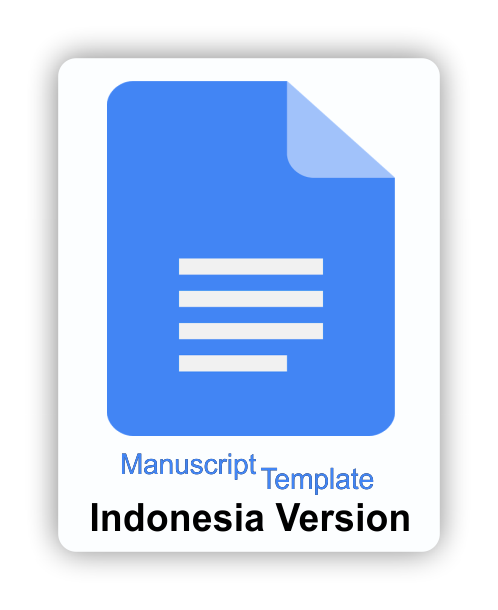The effectiveness of video-assisted asynchronous learning on students' learning outcomes in the subject of akidah akhlak
Downloads
Andina, E. (2019). Efektivitas Pengukuran Kompetensi Guru. Aspirasi: Jurnal Masalah-Masalah Sosial. https://doi.org/10.46807/aspirasi.v9i2.1103
Arianto, F., Bachri, B. S., & Mariono, A. (2022). Asynchronous dan Synchronous Learning pada Pendidikan Tinggi: Studi Komparasi. Jurnal Ilmiah Mandala Education, 8(4), Article 4. https://doi.org/10.58258/jime.v8i4.4067
Atmawati, T. (2021). Pengaruh Forsway dalam Asynchronous Learning Berbasis Google Classroom Terhadap Keaktifan dan Penguasaan Materi Siswa. JEMS: Jurnal Edukasi Matematika Dan Sains, 9(1), Article 1. https://doi.org/10.25273/jems.v9i1.8809
Bujang, G. R., & Subset, M. F. (2022). Pengajaran-Pembelajaran Bahan Seni Bahasa: Aplikasi Semantik Inkuisitif Dan Teori Relevans. Practitioner Research, 4, 172–196. https://doi.org/10.32890/pr2022.4.10
Dakhi, A. S. (2020). Peningkatan Hasil Belajar Siswa. Jurnal Education and Development, 8(2), 468–468. https://journal.ipts.ac.id/index.php/ED/article/view/1758.
Darma Wisada, P., Sudarma, I. K., & Yuda S, Adr. I. W. I. (2019). Pengembangan Media Video Pembelajaran Berorientasi Pendidikan Karakter. Journal of Education Technology. https://ejournal.undiksha.ac.id/index.php/JET/article/view/21735
Developer, medcom id. (2021, November 20). Survei ?IDEAS Beberkan Fakta Penurunan Kualitas Pendidikan Selama PJJ. medcom.id. https://www.medcom.id/pendidikan/news-pendidikan/ybJOvLWk-survei-ideas-beberkan-fakta-penurunan-kualitas-pendidikan-selama-
Dewi, F. F., & Handayani, S. L. (2021). Pengembangan Media Pembelajaran Video Animasi En-Alter Sources Berbasis Aplikasi Powtoon Materi Sumber Energi Alternatif Sekolah Dasar. Jurnal Basicedu, 5(4), Article 4. https://jbasic.org/index.php/basicedu/article/view/1229
Flegr, S., Kuhn, J., & Scheiter, K. (2023). How to foster STEM learning during Covid-19 remote schooling: Combining virtual and video experiments. Learning and Instruction, 86, 101778. https://doi.org/10.1016/j.learninstruc.2023.101778
Ginanjar, M. H., & Kurniawati, N. (2017). Pembelajaran Akidah Akhlak dan Korelasinya Dengan Peningkatan Akhlak al-Karimah Peserta Didik. Edukasi Islami: Jurnal Pendidikan Islam. http://jurnal.staialhidayahbogor.ac.id/index.php/ei/article/view/181
Jatmiko, B. (2022). Pelatihan Optimalisasi Media Pembelajaran Daring untuk Menunjang Synchronous dan Asynchronous Learning System. International Journal of Community Service Learning, 6(1), Article 1. https://doi.org/10.23887/ijcsl.v6i1.43367
Khairani, M., Sutisna, S., & Suyanto, S. (2019). Studi Meta-Analisis Pengaruh Video Pembelajaran Terhadap Hasil Belajar Peserta Didik. Jurnal Biolokus, 2(1), Article 1. https://doi.org/10.30821/biolokus.v2i1.442
Kuhlmann, S. L., Bernacki, M. L., Greene, J. A., Hogan, K. A., Evans, M., Plumley, R., Gates, K., & Panter, A. (2023). How do students' achievement goals relate to learning from well-designed instructional videos and subsequent exam performance? Contemporary Educational Psychology, 73, 102162. https://doi.org/10.1016/j.cedpsych.2023.102162
Lestari, N. K. D., Kusumawati, N. P. A., & Nuratama, I. P. (2022). Peran Kompetensi Sumber Daya Manusia Dalam Memoderasi Hubungan Pemanfaatan Teknologi Informasi Dan Sistem Pengendalian Internal Terhadap Kualitas Laporan Keuangan LPD Se-Kecamatan Penebel. Hita Akuntansi Dan Keuangan, 3(1), Article 1. https://doi.org/10.32795/hak.v3i1.2306
Nabillah, T., & Abadi, A. P. (2020). Faktor Penyebab Rendahnya Hasil Belajar Siswa. Prosiding Sesiomadika, 2(1c), Article 1c. https://journal.unsika.ac.id/index.php/sesiomadika/article/view/2685
Nuritha, C., & Tsurayya, A. (2021). Pengembangan Video Pembelajaran Berbantuan Geogebra untuk Meningkatkan Kemandirian Belajar Siswa. Jurnal Cendekia : Jurnal Pendidikan Matematika, 5(1), Article 1. https://doi.org/10.31004/cendekia.v5i1.430
Nurwahidah, C. D., Zaharah, Z., & Sina, I. (2021). Media Video Pembelajaran Dalam Meningkatkan Motivasi Dan Prestasi Mahasiswa. Rausyan Fikr : Jurnal Pemikiran Dan Pencerahan, 17(1), Article 1. https://doi.org/10.31000/rf.v17i1.4168
Okabe-Miyamoto, K., Durnell, E., Howell, R. T., & Zizi, M. (2022). Video Conferencing During Emergency Distance Learning Impacted Student Emotions During COVID-19. Computers in Human Behavior Reports, 7, 100199. https://doi.org/10.1016/j.chbr.2022.100199
Panggabean, F., Simanjuntak, M. P., Florenza, M., & Sinaga, L. (2021). Analisis Peran Media Video Pembelajaran Dalam Meningkatkan Hasil Belajar Ipa Smp. 2(1). https://jurnal.unimed.ac.id/2012/index.php/JPPIPAI/article/view/24502
Perry, M., Bates, M. S., Cimpian, J. R., Beilstein, S. O., & Moran, C. (2022). Impacting Teachers' Reflection On Elementary Mathematics Classroom Videos In Online Asynchronous Professional Learning Contexts. Teaching and Teacher Education: Leadership and Professional Development, 1, 100003. https://doi.org/10.1016/j.tatelp.2022.100003
Purwanti, B. (2015). Pengembangan Media Video Pembelajaran Matematika dengan Model Assure. Jurnal Kebijakan Dan Pengembangan Pendidikan, 3(1), Article 1. https://ejournal.umm.ac.id/index.php/jkpp/article/view/2194
Putri, N. I. A. G., & Setiawan, R. (2020). Rancang Bangun Aplikasi Elearning. Jurnal Sistem Informasi Dan Sains Teknologi, 2(1), Article 1. https://doi.org/10.31326/sistek.v2i1.672
Qurrotaini, L., Sari, T. W., Sundi, V. H., & Nurmalia, L. (2020). Efektivitas Penggunaan Media Video Berbasis Powtoon dalam Pembelajaran Daring. Prosiding Seminar Nasional Penelitian LPPM UMJ, 2020(0), Article 0. https://jurnal.umj.ac.id/index.php/semnaslit/article/view/7869
Rapono, M., Safrial, S., & Wijaya, C. (2019). Urgensi Penyusunan Tes Hasil Belajar: Upaya Menemukan Formulasi Tes Yang Baik dan Benar. JUPIIS: Jurnal Pendidikan Ilmu-Ilmu Sosial, 11(1), Article 1. https://doi.org/10.24114/jupiis.v11i1.12227
Ribosa, J., & Duran, D. (2023). Students' Feelings Of Social Presence When Creating Learning-By-Teaching Educational Videos For A Potential Audience. International Journal of Educational Research, 117, 102128. https://doi.org/10.1016/j.ijer.2022.102128
Ridha, M., Firman, F., & Desyandri, D. (2021). Efektifitas Penggunaan Media Video pada Pembelajaran Tematik Terpadu di Sekolah Dasar Saat Pandemi Covid-19. Jurnal Pendidikan Tambusai, 5(1), 154–162. https://doi.org/10.31004/jptam.v5i1.925
Ronny, C. C., Scuric, Z., Ethan, E., Cruser, S., Arndt, A., Cox, R., P. Toma, S., Sphiro, C., Fitzgerald, M. L., Barnes, G., & H. Crosbie, R. (2019). Student Satisfaction and Learning Outcomes in Asynchronous Online Lecture Videos. CBE"”Life Sciences Education. https://www.lifescied.org/doi/full/10.1187/cbe.18-08-0171
Setiawan, R., Mardapi, D., Pratama, A., & Ramadan, S. (2019). Efektivitas Blended Learning Dalam Inovasi Pendidikan Era Industri 4.0 Pada Mata Kuliah Teori Tes Klasik. Jurnal Inovasi Teknologi Pendidikan, 6(2), Article 2. https://doi.org/10.21831/jitp.v6i2.27259
Siswanto, S., Kartanagara, M. A. R., & Liu, S.-C. (2021). Pengaruh Penerapan Asynchronous Learning Dan Motivasi Belajar Terhadap Hasil Belajar. Jurnal Kependidikan Penelitian Inovasi Pembelajaran, 5(1), Article 1. https://doi.org/10.21831/jk.v5i1.39420
Sitepu, E. N. (2022). Media Pembelajaran Berbasis Digital. Prosiding Pendidikan Dasar, 1(1), Article 1. https://doi.org/10.34007/ppd.v1i1.195
Sunarsi, D. (2018). Pengembangan Sumber Daya Manusia Strategik & Karakterisrik Sistem Pendukungnya: Sebuah Tinjauan. Jurnal Ilmiah MEA (Manajemen, Ekonomi, & Akuntansi), 2(3), Article 3. https://doi.org/10.31955/mea.v2i3.461
Syamsuar, S., & Reflianto, R. (2019). Pendidikan Dan Tantangan Pembelajaran Berbasis Teknologi Informasi Di Era Revolusi Industri 4.0. E-Tech : Jurnal Ilmiah Teknologi Pendidikan, 6(2), Article 2. https://ejournal.unp.ac.id/index.php/e-tech/article/view/101343
Wahyuningtyas, R., & Sulasmono, B. S. (2020). Pentingnya Media dalam Pembelajaran Guna Meningkatkan Hasil Belajar di Sekolah Dasar. Edukatif : Jurnal Ilmu Pendidikan, 2(1), Article 1. https://doi.org/10.31004/edukatif.v2i1.77
Waluyohadi, & Lopatka, A. (2022). 90 Days to Achieve Monetization: Implementing Design Thinking in a YouTube Channel. Procedia Computer Science, 207, 4207–4216. https://doi.org/10.1016/j.procs.2022.09.484
Wardhana, W. S. (2020). Strategi Pengembangan Kompetensi Guru Secara Mandiri Di Era Literasi Digital. Prosiding Seminar Nasional Bahasa Dan Sastra Indonesia (Senasbasa), 4(1), Article 1. https://doi.org/10.22219/.v4i1.3704
Yudha, J. R. P. A., & Sundari, S. (2021). Manfaat Media Pembelajaran Youtube Terhadap Capaian Kompetensi Mahasiswa. Journal of Telenursing (JOTING). https://journal.ipm2kpe.or.id/index.php/JOTING/article/view/2561
Zeng, Y., & Liu, Y. (2021). Relevance Strategy in Reading and Reading Instruction. Humanities and Social Sciences, 9(2), Article 2. https://doi.org/10.11648/j.hss.20210902.11
The journal allows the author(s) to hold the copyright without restrictions. Finally, the journal allows the author(s) to retain publishing rights without restrictions
 | Jurnal Inovasi Teknologi Pendidikan by http://journal.uny.ac.id/index.php/jitp is licensed under a Creative Commons Attribution-ShareAlike 4.0 International License. |























